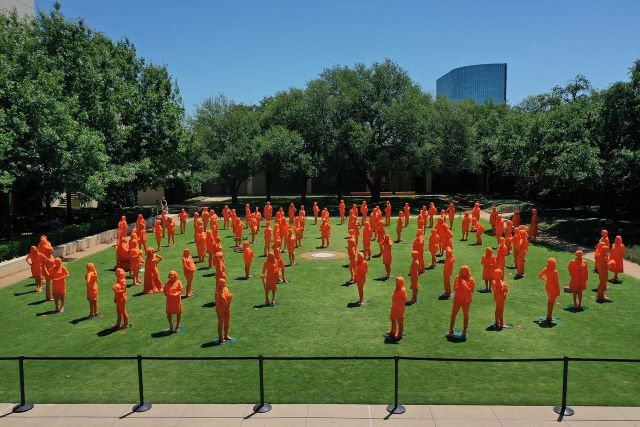
In celebration of Women’s History Month, Smithsonian installed 120 life-size 3D-printed statues on and around the National Mall as part of the #IfThenSheCan-The Exhibit. According to Inhabitat, a green design and lifestyle site, each of the women featured in the exhibit went into a scanning equipped with 89 cameras and 25 projectors. This was used to generate a 3D image. The statues were then printed with acrylic gel, taking more than 10 hours to create each.
The exhibit includes a particle physicist, health scientist, astronomer, game developer, marine biologist, microbiologist, reliability engineer, ocean explorer, data scientist, geologist, science communication specialist, spaceflight engineer, fire scientist, computer engineer, chemistry professor, STEM educator, exhibit developer, social science researcher, and bioengineering student.
Two members of the University of California San Diego community are also included in the collection of 120 statues on exhibit in the National Mall during Women’s History Month.
Smithsonian is presenting #IfThenSheCan – The Exhibit on and around the National Mall from March 5 through to March 27. Click here to view.
According to UC San Diego, Claire Meaders, and Beata Edyta Mierzwa, share a passion for science outreach and education.
Claire Meaders, assistant teaching professor in UC San Diego’s Division of Biological Sciences, focuses on two aspects of science education: student experiences and non-content instructor talk in the classroom.
Her group uses surveys and observations to assess how the availability and knowledge of campus resources affect student experiences and feelings of belonging. She also researches the prevalence of non-content instructor talk—or verbal communication that surrounds academic content, including how instructors encourage students—in classrooms, with the goal of exploring how this language affects learning outcomes.
Although her research focuses on supporting students in higher education who are already interested in STEM, Meaders was drawn to the IF/THEN initiative because of its mission to get students interested in STEM in the first place.
Beata Edyta Mierzwa, a postdoctoral fellow at UC San Diego and the Ludwig Institute for Cancer Research, researches how different cells of the body divide to help uncover vulnerabilities in cancer cells.
As an artist, she draws— turning difficult-to-understand scientific concepts into metaphorical illustrations. And as a fashion designer, she creates science-inspired clothing made of fabric printed with real microscopic images of cells.
When she started her Ph.D. at the Institute of Molecular Biotechnology in Vienna, Mierzwa focused entirely on her lab work. It wasn’t until midway through her doctoral studies, after creating her first science drawing, that she realized the incredible power that visual aids have for effective science communication.
Mierzwa joined IF/THEN because she realized the impact a role model can have in the lives of young girls. If she had a role model at a young age, her path may have been different.
IF/THEN is an initiative spearheaded by Lyda Hill Philanthropies. All role models being celebrated at the exhibit were chosen by the American Association for the Advancement of Science (AAAS) and Lyda Hill Philanthropies to serve as AAAS IF/THEN Ambassadors—high profile role models for middle school girls. Click here to read more.
The U.S. Army Corps of Engineers has been tasked with…
Brown and Caldwell, a leading environmental engineering and construction firm,…
Humboldt State University, one of four campuses within the California…